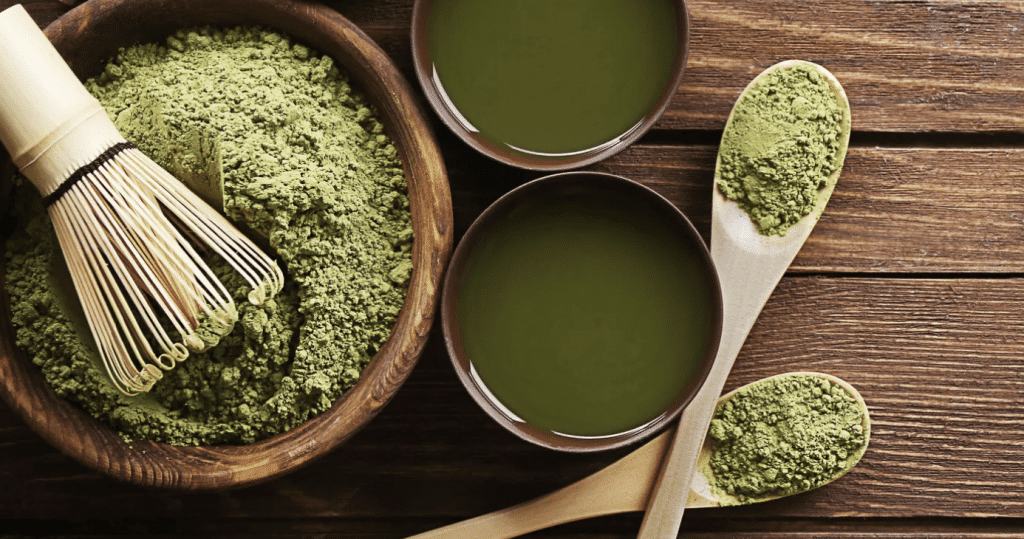What is Kratom?

Mitragyna Speciosa Korth, otherwise known as Kratom, is a tropical evergreen tree in the coffee family native to Southeast Asia in the Indochina and Malaysia phytochoria (botanical regions).
Speciosa is indigenous to Thailand, Indonesia, and Malaysia, Myanmar, and Papua New Guinea where it has been used in traditional medicine since at least the 19th century. The Kratom leaves have some opioid- and stimulant-like properties.
Kratom was first formally described by the Dutch colonial botanist Pieter Korthals in 1839, who named it as such; it was renamed and reclassified several times before George Darby Haviland provided the final name and classification in 1859.
The leaf is usually chewed, but since its adoption in Europe, Kratom has taken many other forms. It is now possible to buy dried leaves, powder, tinctures, resin, enhanced leaves, and there is also a rumor that somebody has managed to create a form of Kratom suitable for intravenous injection.
What Does Kratom Do?
Kratom acts on the brain’s opioid, serotonin, and dopamine receptors in ways similar to, though different from, opioids. Ingesting the leaves releases compounds that simulate the effects of opioid use. The plant’s full influence on the brain is still not fully understood, but the substance acts as a stimulant. It makes users feel more energetic, focused, and in some cases, even euphoric.
The effects of the mitragynine and 7-a-hydroxy mitragynine compounds in kratom include decreasing pain and increasing sedation. Some users report mild to severe side effects, including nausea and vomiting, depression, delusion, seizure, and even coma.
Like opioids, kratom is not safe for consumption in large quantities or an extended period. Its long-term effects on the brain can be dangerous and are as yet not well understood.
What is Kratom used for?
Traditionally Kratom leaves have been used as a medicine; as a treatment for diarrhea, as an analgesic, and as a way to treat addiction to opiates. It is also occasionally used by Thai agricultural workers, who take advantage of its properties as a stimulant at low doses, thus enabling them to work long, backbreaking hours in the fields.
Main reasons people have used Kratom include:
- analgesic pain relief
- anti-diarrhea properties
- mild stimulant for manual labor
- opiate addiction treatment
In 1836, Kratom was reported to be used as an opium substitute in Malaysia.
Kratom was also used as an opium substitute in Thailand in the 19th century.
Data on how often it is used worldwide are lacking as it is not detected by typical drug screening tests. Rates of Kratom use appear to be increasing among those who have been self-managing chronic pain with opioids purchased without a prescription and are cycling (but not quitting) their use.
Health Risks of Kratom
Short-Term Effects of Kratom
Because of the unique mix of chemicals in Kratom, the short-term effects of the drug are complex and variable. The balance between stimulant-like and opiate-like effects depends on the dose taken.
At a low dose (1-5 g) of Kratom, stimulant-like effects predominate. These are felt within 10 minutes and can last for 60 to 90 minutes. While reports by Kratom users indicate that most people find these effects pleasant, some users experience an uncomfortable sense of anxiety and agitation. The primary stimulant-like effects of Kratom are similar to amphetamine, though less intense.
At a moderate to high dose (5-15 g) of Kratom, they can have primarily opioid-like effects that last for several hours. The euphoric “high” induced by Kratom is reportedly less intense than other opioid drugs, and some users describe the experience as unpleasant, or dysphoric.
Doses of Kratom greater than 15 g have effects similar to high doses of opioids, including extreme sedation and a loss of consciousness in some cases.
Long Term Effects
Judging by research done on chronic, high-dose Kratom users in Thailand, there are several unusual long-term effects of this drug such as:
- Hyperpigmentation, or darkening of facial skin.
- Anorexia and weight loss.
- Psychosis.
What are Kratom withdrawal symptoms?
In one study, more than 50% of people who used the drug regularly for at least 6 months developed a Kratom dependency. Dependent users of Kratom suffer physical withdrawal symptoms similar to those of opiates if they stop taking it suddenly.
More than half of the regular users developed severe Kratom dependence problems, while 45% showed a moderate Kratom dependence. Physical withdrawal symptoms commonly experienced include muscle spasms and pain, sleeping difficulty, watery eyes/nose, hot flashes, fever, decreased appetite, and diarrhea. Psychological withdrawal symptoms commonly reported were restlessness, tension, anger, sadness, and nervousness.
3 reasons to quit
It goes without saying that quitting should be high on any user’s priority list to improve their quality of life. Using Kratom can damage your life in many ways and below is just a few of the ways quitting will help you and those around you.
- You’ll be healthier.
There’s not a drug out there without some harmful effects as all drugs are basically poisons. The exact effects vary by drug. The heavy use of many drugs or alcohol leads to extreme weight loss and malnutrition that can affect one’s ability to resist illness.
- You will be more likely to keep a good job.
One of the typical signs of the slide into addiction is lost jobs. It’s very common for a person using drugs to blame others for this setback but normally, it’s because the person stopped performing as well on the job. There were probably more sick days taken, projects were not taken to completion, mistakes were made, customers were neglected and co-workers were alienated. The end result: No more job.
Without spending your money on Kratom your finances should increase. Not only will you be working and not wasting your money but you will be making better decisions.
- You can preserve your relationships.
If one’s spouse or family members are not drug users, it is common for the relationships to be seriously damaged, or to be ended when the other person won’t tolerate the drug use anymore. If those around you are using drugs with you, then any children may be taken away. All your lives could take the same downward spiral together.
People will definitely like you better when you are not using Kratom. Many opiates can cause panic attacks and personality changes. You may not like the person you see in the mirror once you achieve clarity.
Summary
In conclusion, a drug user typically ends up in one of three ways. Either jail for doing things to support their habit, dead from a drug-related problem or overdose, or a life of recovery. Quit Kratom and live a better life today.


